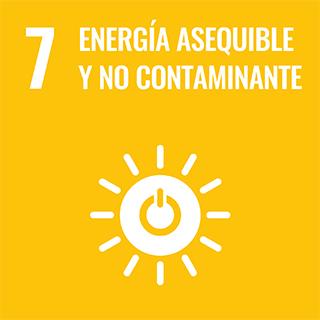
Indexed in
License and use
Grant support
This work was partially funded by the Spanish Ministry of Economy and Competitiveness, under RETOS COLABORA-CION program (Reference Grants SONRISAS: RTC-2015-3601-3, All-in-One: RTC-2016-5479-4 and EASYSAFE RTC-2015-3893-4), and the Spanish Ministry of Industry, Energy, and Tourism through the Strategic Action on Economy and Digital Society (AEESD) under DEPERITA: TSI-100503-2015-39 and SENSORIZA: TSI-100505-2016-10 projects.
Impact on the Sustainable Development Goals (SDGs)

Analysis of institutional authors
Rodriguez-Zurrunero, RobertoCorresponding AuthorUtrilla, RamiroAuthorRomero, ElenaAuthorAraujo, AlvaroAuthorAn Adaptive Scheduler for Real-Time Operating Systems to Extend WSN Nodes Lifetime
Publicated to:Wireless Communications & Mobile Computing. 2018 (4185650): 4185650-10 - 2018-01-01 2018(4185650), DOI: 10.1155/2018/4185650
Authors: Rodriguez-Zurrunero, Roberto; Utrilla, Ramiro; Romero, Elena; Araujo, Alvaro
Affiliations
Abstract
Wireless Sensor Networks (WSNs) are a growing research area as a large of number portable devices are being developed. This fact makes operating systems (OS) useful to homogenize the development of these devices, to reduce design times, and to provide tools for developing complex applications. This work presents an operating system scheduler for resource-constraint wireless devices, which adapts the tasks scheduling in changing environments. The proposed adaptive scheduler allows dynamically delaying the execution of low priority tasks while maintaining real-time capabilities on high priority ones. Therefore, the scheduler is useful in nodes with rechargeable batteries, as it reduces its energy consumption when battery level is low, by delaying the least critical tasks. The adaptive scheduler has been implemented and tested in real nodes, and the results show that the nodes lifetime could be increased up to 70% in some scenarios at the expense of increasing latency of low priority tasks.
Keywords
Quality index
Bibliometric impact. Analysis of the contribution and dissemination channel
The work has been published in the journal Wireless Communications & Mobile Computing, and although the journal is classified in the quartile Q3 (Agencia WoS (JCR)), its regional focus and specialization in Engineering, Electrical & Electronic, give it significant recognition in a specific niche of scientific knowledge at an international level.
From a relative perspective, and based on the normalized impact indicator calculated from the Field Citation Ratio (FCR) of the Dimensions source, it yields a value of: 1.47, which indicates that, compared to works in the same discipline and in the same year of publication, it ranks as a work cited above average. (source consulted: Dimensions Jun 2025)
Specifically, and according to different indexing agencies, this work has accumulated citations as of 2025-06-03, the following number of citations:
- WoS: 5
- Scopus: 7
- Google Scholar: 12
- Open Alex: 13
- OpenCitations: 6
Impact and social visibility
Leadership analysis of institutional authors
There is a significant leadership presence as some of the institution’s authors appear as the first or last signer, detailed as follows: First Author (RODRIGUEZ ZURRUNERO, ROBERTO) and Last Author (ARAUJO PINTO, ALVARO).
the author responsible for correspondence tasks has been RODRIGUEZ ZURRUNERO, ROBERTO.



